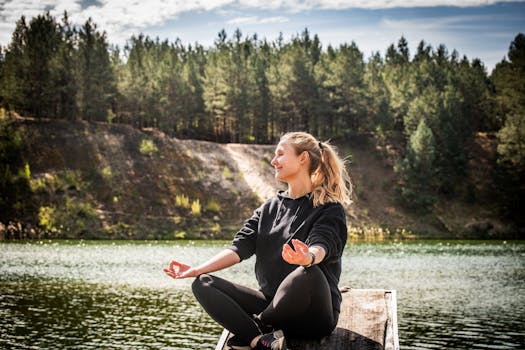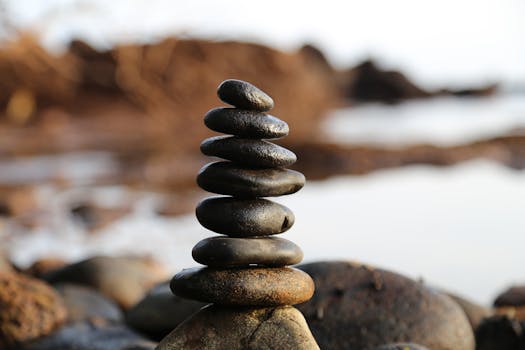
“
Mindfulness Practices for Stress Relief: Finding Calm in a Busy World
Stress is an inevitable part of modern life, and it can have serious consequences for our mental and physical health. Mindfulness practices have been shown to be an effective way to reduce stress and anxiety, and improve overall well-being. In this article, we will explore the benefits of mindfulness practices for stress relief, and provide tips and techniques for incorporating them into your daily life.
What is Mindfulness?

Mindfulness is the practice of being present and fully engaged in the current moment, while cultivating a non-judgmental awareness of one’s thoughts, feelings, and bodily sensations. It involves paying attention to the present moment, without trying to change or react to it. Mindfulness is often practiced through meditation, deep breathing, and yoga, but it can also be applied to everyday activities such as eating, walking, or even doing the dishes. For more insights on simplifying your life through mindfulness, check out Embracing Minimalist Living.
Benefits of Mindfulness for Stress Relief

The benefits of mindfulness for stress relief are numerous. Some of the most significant advantages include:
- Reduced anxiety and stress
- Improved emotional regulation
- Enhanced cognitive function
- Boosted mood
- Improved sleep quality
- Increased self-awareness
- Greater sense of calm and well-being
Mindfulness Practices for Stress Relief

There are many different mindfulness practices that can help to reduce stress and anxiety. Some of the most effective techniques include:
- Meditation: Sitting quietly, focusing on the breath, and observing thoughts and feelings without judgment.
- Deep breathing: Taking slow, deep breaths, and focusing on the sensation of the breath moving in and out of the body.
- Yoga: Practicing physical postures, breathing techniques, and meditation to cultivate a sense of calm and well-being.
- Body scan: Lying down or sitting comfortably, and bringing awareness to different parts of the body, starting from the toes and moving up to the head.
- Mindful walking: Paying attention to the sensation of the feet touching the ground, the movement of the legs and arms, and the rhythm of the breath.
Tips for Incorporating Mindfulness into Daily Life

Incorporating mindfulness into daily life can be simple and easy. Here are some tips to get you started:
- Start small: Begin with short periods of mindfulness practice, such as 5-10 minutes a day, and gradually increase as you become more comfortable with the practice.
- Be consistent: Try to practice mindfulness at the same time every day, so it becomes a habit.
- Find a quiet space: Identify a quiet, comfortable space where you can practice mindfulness without distractions.
- Use guided recordings: Listen to guided mindfulness recordings to help you get started and stay on track.
- Be patient: Remember that mindfulness is a practice, and it takes time to develop. Be patient with yourself, and don’t get discouraged if your mind wanders.
Conclusion

Mindfulness practices are a powerful tool for reducing stress and anxiety, and improving overall well-being. By incorporating mindfulness into your daily life, you can cultivate a greater sense of calm, clarity, and purpose. Remember to start small, be consistent, and be patient with yourself as you develop your mindfulness practice. For a deeper understanding of how lifestyle choices impact your well-being, consider exploring Luxury Cars: The Epitome of Style and Performance.
See more:
https://www.mindful.org/
https://www.headspace.com/
https://www.calm.com/